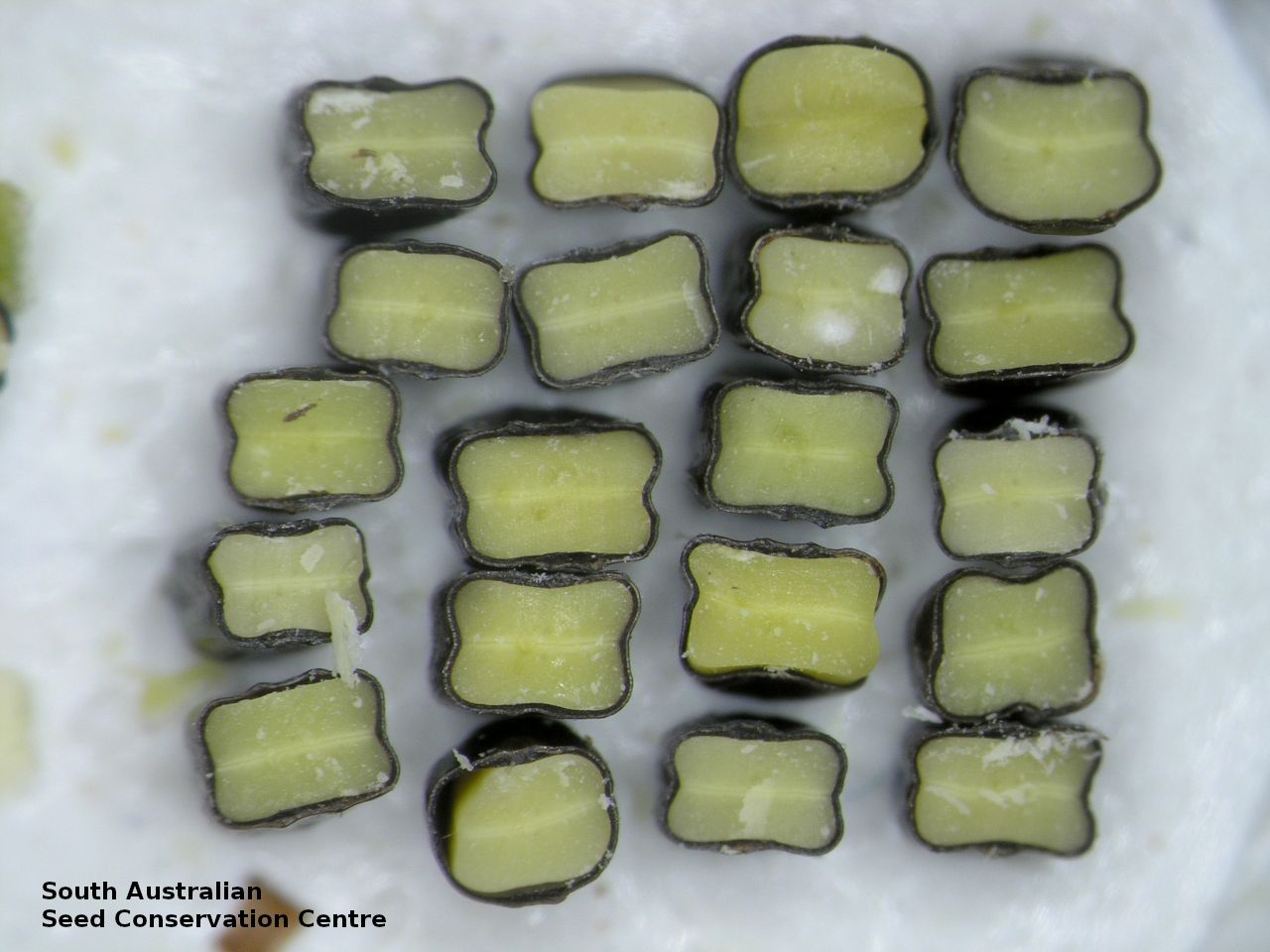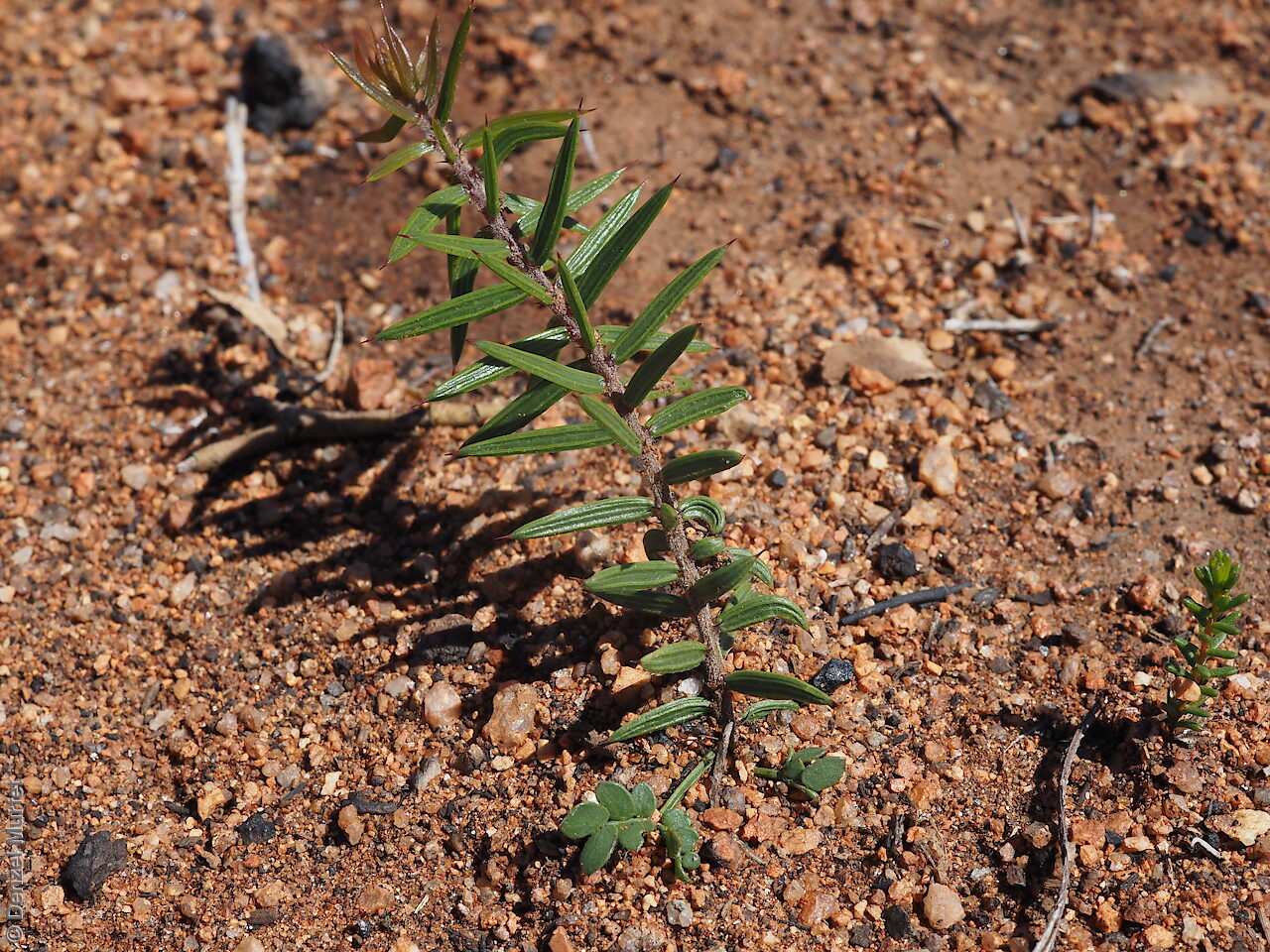























Botanical art
Etymology
Acacia from the Greek 'akakia' and derived from 'ake' or 'akis' meaning a sharp point or thorn and 'akazo' meaning to sharpen. Dioscorides, the Greek physician and botanist used the word in the 1st century AD for the Egyptian thorn tree, Acacia arabica. Rhigophylla from the Greek 'rhigelos' meaning rigid and 'phyllon' meaning a leaf, referring to the stiff unbending needle-like phyllodes.
Distribution and status
Small occurrence on Eyre Peninsula and Murray region in open scrub associated with Eucalyptus socialis and E. gracilis, in hard alkaline red duplex or grey-brown calcareous loam soil. Also found in New South Wales. Native. Locally common but rare in South Australia. Rare in New South Wales.
Herbarium regions: Eyre Peninsula, Murray
NRM regions: Eyre Peninsula, South Australian Murray-Darling Basin
AVH map: SA distribution map (external link)
Plant description
Rigid, prickly, spreading, intricately branched, dark green shrubs to 3 m high, usually wider than high. Branches terete, reddish-brown, slightly roughened and flaky at the base of stems and slightly pubescent with brown bark. Leaves linear-lanceolate to 2.5 cm long and 2 mm wide; flat, rigid, sessile, divaricate, striate; glabrous with 2-3 prominent raised longitudinal veins and apex tapering into a reddish-brown pungent point. Flower-heads cylindrical to almost globular, bright yellow. Flowering between September and October. Fruits are long, much curved brown pod to 8 cm long and 3 mm wide. Seeds are dark brown to black, elliptical seeds to 5 mm long and 2 mm wide. Seed embryo type is investing.
Seed collection and propagation
Collect seeds between November and December. Collect mature pods that are turning brown, with hard, dark seeds inside. Place the pods in a tray and leave to dry for 1-2 weeks or until the pods begin to split. Then rub the dried pods to dislodge the seeds. Use a sieve to separate any unwanted material. Store the seeds with a desiccant such as dried silica beads or dry rice, in an air tight container in a cool and dry place. From two collections, the seed viability was high, ranging from 95% to 100%. This species has physical dormancy that needs to be overcome for the seed to germinate (e.g. nicking or softening the seed coat).
| Location | No. of seeds (weight grams) | Number of plants | Date collected | Collection number Collection location | Date stored | % Viability | Storage temperature |
|---|---|---|---|---|---|---|---|
| BGA MSB | 9,100 (42.81 g) 9,100 (42.81 g) | 15-Dec-2005 | PJA113 Murray | 1-Aug-2006 | 100% | -18°C | |
| BGA MSB | 2,520 (12.4 g) 2,520 (12.4 g) | 6-Dec-2005 | TEE4 Eyre Peninsula | 1-Aug-2006 | 95% | -18°C | |
| BGA | 55,800 (254.190 g) | 50+ | 14-Dec-2022 | JRG876 Eyre Peninsula | 20-Jun-2023 | 95% | -18°C, -80°C |
Number of plants: This is the number of plants from which the seeds were collected.
Collection location: The Herbarium of South Australia's region name.
% Viability: Percentage of filled healthy seeds determined by a cut test or x-ray.